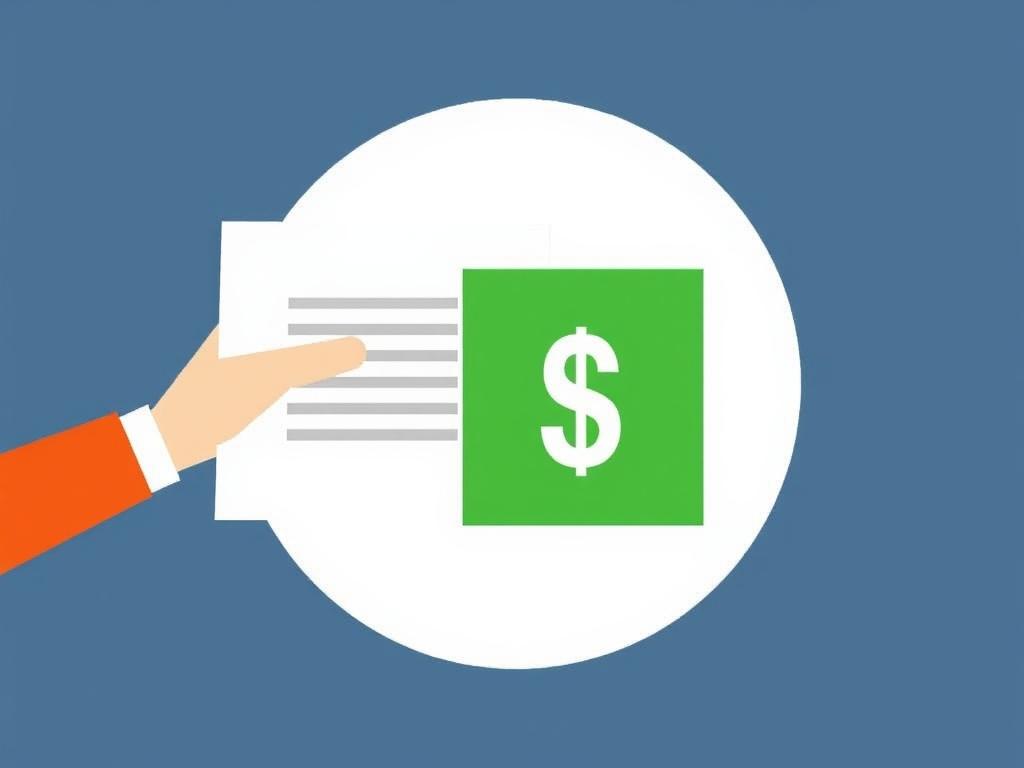SQLITE NOT INSTALLED
Содержание
Understanding the Basics: What Is a Credit Report?
Have you ever wondered what a credit report really is and why it matters so much? Simply put, a credit report is a detailed record of your credit history maintained by credit bureaus. Think of it as your financial report card that shows how well you manage credit, loans, and debts over time. This report plays a crucial role when you apply for a new credit card, loan, mortgage, or even sometimes for a rental apartment or job. Lenders and other institutions use it to decide how risky it is to lend you money or offer your services.
At its core, a credit report tracks your borrowing behavior. It summarizes your credit accounts, outstanding debts, payment history, and public records such as bankruptcies or liens. The goal is to provide a comprehensive snapshot of your creditworthiness. When you understand what a credit report is and how to read it, you can take control over your financial life, identify errors, and work towards improving your credit standing.
The Main Components of a Credit Report
Reading your credit report might seem overwhelming at first glance, but once you know what to look for, it becomes much clearer. The report typically contains several important sections that tell the story of your credit management. Here’s a breakdown:
Personal Information
This section includes your name, address, social security number, birth date, and employment details. This information is used to verify your identity, so it’s important to ensure it’s accurate. Mistakes here could cause confusion or identity mix-ups.
Credit Accounts
This is the heart of your credit report. It lists all your active and closed credit accounts, including credit cards, mortgages, auto loans, student loans, and other lines of credit. Each account shows:
- Type of account (revolving like credit cards, or installment like a car loan)
- Date the account was opened
- Credit limit or loan amount
- Current balance
- Payment history
- Status (open, closed, delinquent)
Credit Inquiries
When you apply for credit, the lender requests your credit report, resulting in an inquiry. These are recorded here and categorized as either “hard” or “soft” inquiries. Hard inquiries can affect your credit score, while soft inquiries do not.
Public Records and Collections
This section contains information about any bankruptcies, tax liens, judgments, or overdue debts sent to collections. These items can seriously impact your credit health.
Credit Score (Sometimes)
Some credit reports include your credit score—the three-digit number summarizing your creditworthiness based on your report. Not all reports provide this, but when they do, it helps you understand your overall standing quickly.
How to Read a Credit Report: Step-by-Step
Now that you know the main components, let’s walk through how to read a credit report effectively. The key is to take your time and check every section carefully.
Step 1: Verify Your Personal Details
Start by making sure your name, address, and other personal details are correct. If you spot an old address or misspelled name, update it to avoid confusion or fraud.
Step 2: Review Your Credit Accounts
Go through each credit account listed. Check that all accounts belong to you and that the status matches your records. Look at balances to see if any account shows a higher amount than you owe. Also, pay close attention to payment histories to spot any missed or late payments, which can hurt your credit score.
Step 3: Understand Credit Inquiries
Review all the inquiries and identify which ones you authorized and which ones look suspicious. Too many hard inquiries in a short period might lower your credit score, so it’s good to be aware of them.
Step 4: Check for Negative Public Records or Collections
Look carefully in this section for any overdue debts or legal records that you may not know about. Negative entries here can significantly impact your credit, so it’s crucial to address them.
Step 5: Use the Report to Improve Your Credit
Once you have a clear understanding of your credit report, you can use this information to take action. Fix inaccuracies by disputing errors with the credit bureau, pay down balances, and maintain timely payments to boost your credit health.
The Importance of Regularly Checking Your Credit Report
Many people don’t realize that you can check your credit report for free once a year from the major credit reporting agencies. Doing this regularly helps you stay on top of your credit history, catch fraudulent activity early, and monitor your progress as you work on improving your credit. Imagine spotting an identity theft attempt quickly because you noticed a suspicious account you didn’t open. That’s the kind of power a credit report gives you.
How to Obtain Your Credit Report

Getting your credit report is easier than ever. In the United States, the Fair Credit Reporting Act (FCRA) requires the three major credit bureaus—Equifax, Experian, and TransUnion—to provide one free credit report every 12 months. You can request the reports online, by phone, or by mail.
Here’s a simple table of options to obtain your free credit report:
| Method | How to Use | Details |
|---|---|---|
| Online | Visit annualcreditreport.com | Free access to reports from all three bureaus once a year |
| Phone | Call 1-877-322-8228 | Request your report via automated system or representative |
| Download and complete a request form from the website | Mail the form to the addresses provided for each bureau |
Additionally, some credit card companies and personal finance sites allow you to check your credit score and report for free on a monthly basis, helping you monitor changes more often.
Common Terms You’ll Encounter When Reading a Credit Report
Understanding the language used in credit reports is crucial. Here are some common terms that will appear and what they mean:
- Revolving Credit: A type of credit like credit cards where the balance can fluctuate and payments are flexible.
- Installment Credit: Loans with fixed payments, such as mortgages or car loans.
- Delinquent: A payment that’s late or overdue.
- Charge-Off: When a creditor writes off a debt as unlikely to be collected.
- Hard Inquiry: A credit check that can affect your credit score.
- Soft Inquiry: A credit check that does not affect your score, like checking your own report.
- Public Records: Bankruptcy, tax liens, or court judgments available for public viewing.
How Errors on Your Credit Report Can Affect You

A surprising number of credit reports contain inaccuracies. These errors can range from outdated account information to wrong personal details or accounts that aren’t yours. Even a small mistake, like a late payment incorrectly reported, can drag your credit score down and make borrowing more expensive or difficult.
If you carefully read and understand your credit report, you can spot these errors and dispute them with the credit bureaus. Each bureau has a process for submitting disputes and typically must investigate within 30 days. Fixing errors can quickly improve your creditworthiness and financial opportunities.
Tips for Maintaining a Healthy Credit Report
Maintaining a good credit report isn’t just about fixing problems; it’s about building strong habits. Here are some handy tips to keep your report in good shape:
- Pay bills on time every month to build a positive payment history.
- Keep credit card balances low relative to your credit limits.
- Avoid opening too many new accounts at once.
- Regularly check your report for errors or fraudulent activity.
- Don’t close old credit accounts unnecessarily; length of credit history helps your score.
Summary Table: Factors Affecting Your Credit Report and Score
| Factor | Impact on Report | Effect on Credit Score |
|---|---|---|
| Payment History | Shows late, on-time payments | High impact – on-time payments improve score |
| Credit Utilization | Current balances vs. credit limits | High impact – lower utilization = higher score |
| Length of Credit History | Account age | Moderate impact – longer history improves score |
| New Credit | Recently opened accounts and inquiries | Moderate impact – too many new accounts can lower score |
| Types of Credit | Mix of credit cards, loans etc. | Low impact – diverse types can help score |
Using Your Credit Report Wisely
Once you know what a credit report is and how to read it, it becomes a powerful tool. Whether you’re planning to apply for a loan, buy a home, or simply track your financial health, reviewing your credit report regularly helps you make smarter decisions. It puts you in control, so you’re not caught off guard by surprises or errors. Plus, understanding your credit encourages better habits that save you money and stress in the long run.
Who Can See Your Credit Report?
Your credit report isn’t public information—it’s only accessible to authorized parties, such as lenders, landlords, employers (with your permission), and insurance companies assessing your risk. This is why maintaining a clean and accurate credit report is essential, as it directly influences how these important decisions are made.
What to Do If You Find Errors on Your Credit Report
Errors happen, but you don’t have to live with them. Here’s a quick checklist of what to do if you spot something wrong on your credit report:
- Gather supporting documents proving the mistake (payment receipts, letters, etc.)
- File a dispute with the credit bureau that issued the report.
- Contact the creditor or entity reporting the error.
- Keep a record of all communications during the dispute process.
- Follow up to ensure the error is corrected or removed.
Understanding Your Credit Report Opens Doors to Financial Freedom
The phrase “knowledge is power” could not be truer when it comes to understanding your credit report. Ignorance or neglect can cost you thousands in higher interest rates or missed opportunities. But by learning what a credit report is, how to read it, and how to maintain it, you take a huge step toward financial empowerment.
Resources for Further Help
If you find the details overwhelming, help is available. Financial advisors, credit counselors, and nonprofit organizations offer free or low-cost assistance to guide you through understanding and improving your credit report. Exploring these options is a smart move if you want personalized help and peace of mind.
Conclusion
A credit report is more than just a list of numbers and accounts—it’s a comprehensive record of your financial behavior and creditworthiness. By understanding what a credit report is and learning how to read it, you gain a powerful tool to manage your money, fix errors, and improve your credit score. Remember to check your credit report regularly, know the key terms, watch for mistakes, and adopt healthy credit habits. Taking charge of your credit report opens the door to better financial opportunities, lower borrowing costs, and ultimately, greater financial security. Understanding and reading your credit report isn’t complicated—it’s an essential step everyone should take on their journey to financial wellness.
Опубликовано: 23 July 2025 Кредитрон – блог о кредитах, финансах и прочих реверансах
Кредитрон – блог о кредитах, финансах и прочих реверансах

